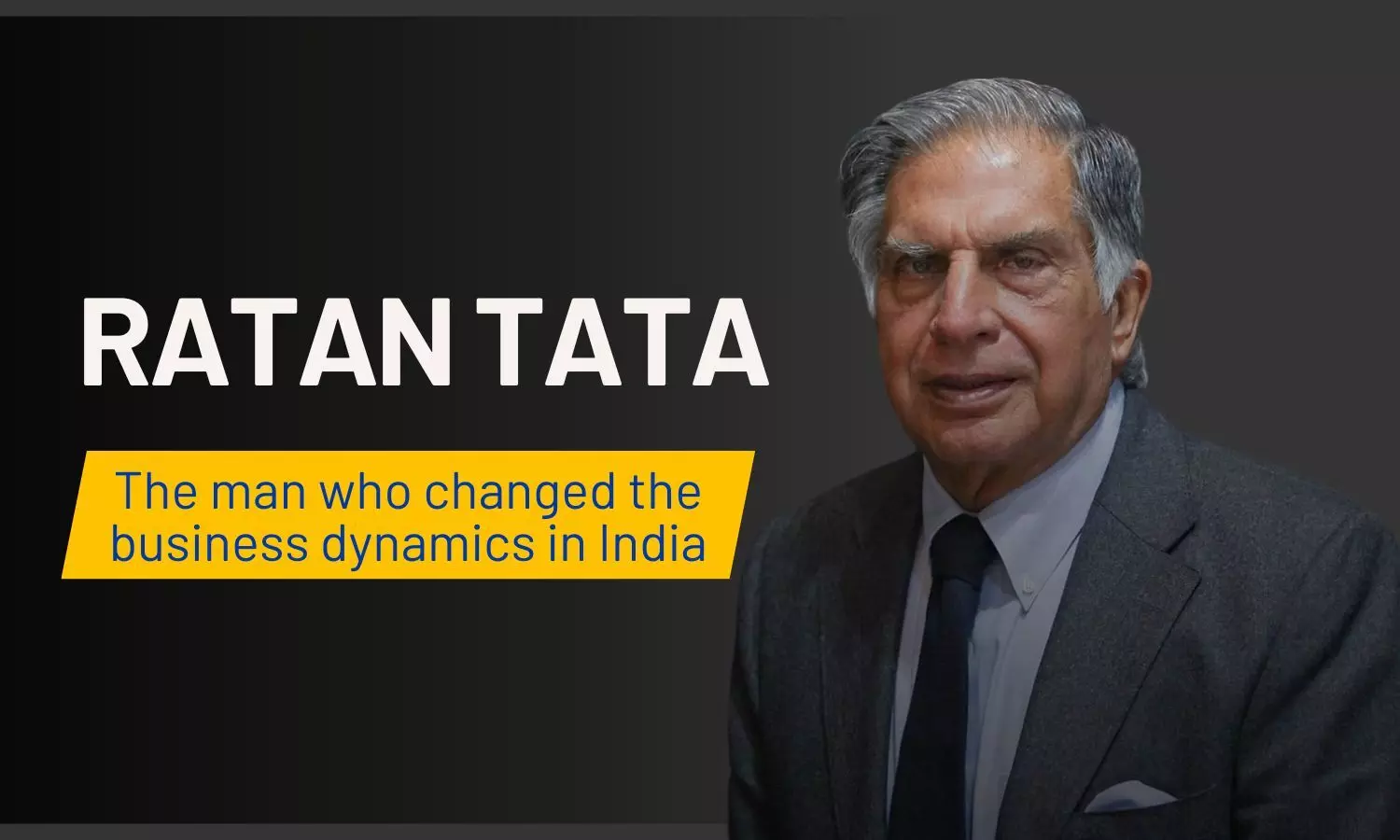Ratan Tata: The Man Who Changed The Business Dynamics In India
Ratan Tata played a key role in defining the business landscape in India. Under his leadership, the group value surged from $4 billion to $77 billion
Ratan Tata: The Man Who Changed The Business Dynamics In India

The demise of former Tata Group Chairman Ratan Tata left an indelible mark on the business landscape of the country. A number of notable personalities from various spheres, including business, politics and Bollywood attended the last rites of the business tycoon. In fact, commoners who held a special place in their hearts came out in numbers to pay respect to Ratan Tata’s innumerable kindnesses.
Being a visionary, Ratan Tata contributed immensely in transforming Tata Group from an distinctive Indian conglomerate into a global powerhouse via a slew of noteworthy acquisitions. With a presence in across 80 countries spread across 6 continents, Tata group employs over a million people.
Interestingly, Tata Sons played a key role in nation building, first under British Rule and then after the Independence. In fact, this particular approach made the group fill what the economists call “institutional voids.” Founded in 1868 by Jamsetji Tata, the foundation of the business landscape was dominated by Parsis, who originally came from Iran. Tata gave a new vision to the nation by expanding businesses in various domains ranging across hotels, steel, chemicals and power. Notably, subsidiary companies like Tata Steel in Jamshedpur which is named after the founder Jamshetji were forced to tap into unrelated domains of businesses which include housebuilding, electricity generation and even shoemaking.
When Ratan Tata took over the baton to run the conglomerate, in 1991, India’s economic landscape was undergoing tremendous changes. This is the year the Liberalisation, Privatisation, and Globalisation (LPG) policy was introduced which disrupted the domestic businesses. Ratan Tata saw this as both a threat and an opportunity. Threat stemmed from the possibility that the Tata Son’s business model might no longer be relevant. However, he also saw an opportunity to conquer the world with new and better business models.
However in 1991, the legacy which the conglomerate carried started fading away slowly. Following LPG policy, multinational corporations (MNCs) were keeping a hawk eye on India as they saw a lot of potential. Though, success of the past business ventures outweighed the present danger, it's the widespread internal divisions that led to closure of four textile mills.
Ratan Tata did not turn a blind towards such developments.Therefore, in order to address the impending danger he took bold steps. Firstly, he forced the senior leadership to bend the knee or leave, by appointing non-Indian managers in key positions. He focused on liquidating Tata’s cement, textiles, cosmetics and pharmaceutical businesses. By trying to replace ties of history with ties of quality and culture, he sent auditors to the vast organisation while also introducing training programmes.
Realising that attack is the best form of defence, Ratan Tata embarked on a slew of journeys marked by noteworthy acquisitions. In 2000, Tata Tea acquired Tetley Tea, a company that was three times its size. In 2007 Tata Steel bought Corus (then British Steel), Europe’s second biggest steel maker, followed by acquisition of Jaguar Land Rover in 2008. Notably in 2012, Tata group became the biggest employer of blue-collar workers in Great Britain.
Apart from expansion and acquisition, Ratan Tata was instrumental in bringing innovation to the picture by introducing Tata Nano, a ₹1,00,000 car for the emerging world. Though it was touted as the world's cheapest car, the move failed to bear fruit as per expectations.
In fact, the prospects of the new car were overshadowed by its susceptibility to what the company called ‘thermal incidents.’ Additionally, the car’s Unique Selling Point (USP) backfired the status-conscious consumers as they rejected the idea of driving the cheapest car in the world.
The acquisition of Corus also added more fuel to fire as Tata not only overpaid for Corus but witnessed a hefty closure.
Though he managed the conglomerate for almost two decades, Ratan Tata also suffered a common problem among powerful CEOs. The problem entails managing success. He was instrumental in choosing his successor, Cyrus Mistry, the company’s biggest shareholder but was also responsible for his ouster.
Overall, Ratan Tata’s success has outweighed his failures. When he took over the company it was valued at just $4 billion. After getting relieved from his responsibilities the valuation hit $77 billion. As of now the empire is worth $400 billion which operates close to 26 groups of companies.
The critics argue that Tata Group is still in a mess despite being a global powerhouse and that more than half of the revenue is contributed by Tata Consulting Services. Further, Tata’s unsuccessful journey with Corus was counterbalanced by the success of Jaguar Land Rover. The move turned the tables in the company's favour.
PM Narendra Modi called Ratan Tata “a visionary business leader, a compassionate soul and an extraordinary human being.” However, the biggest tribute of all not comes from
Modi’s words but from Ratan Tata’s vision of India as an economic powerhouse.

